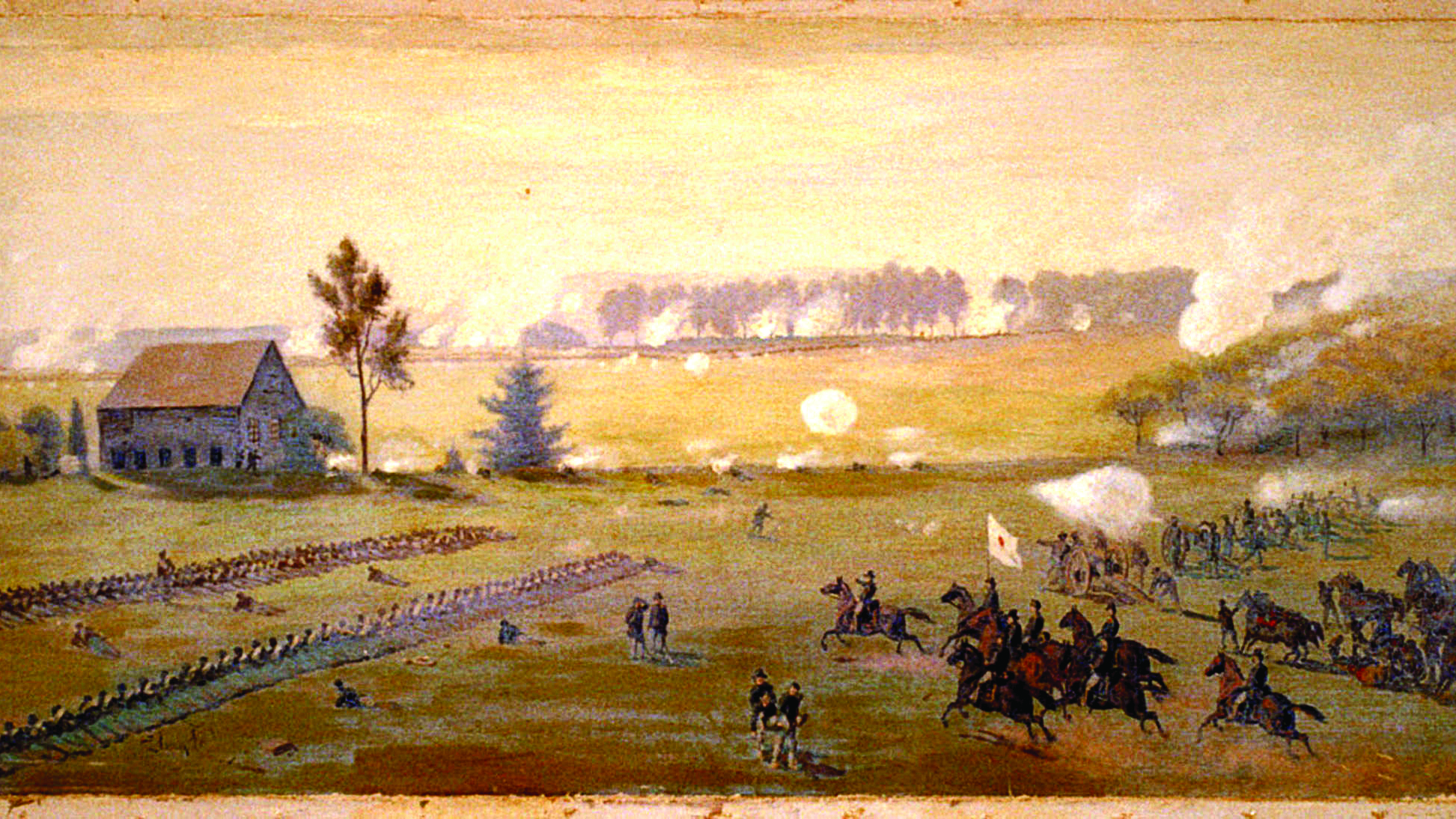Gettysburg’s Peach Orchard is a new look at the role played by Joseph Sherfy’s 10-acre peach orchard during the Battle of Gettysburg. Boldly, the authors claim that historians have overlooked the Peach Orchard fighting; the orchard’s topographical prominence “heavily influence[d] the Second Day’s fighting”; and it “partially persuaded [Robert E.] Lee to launch the disastrous…‘Pickett’s Charge.’”
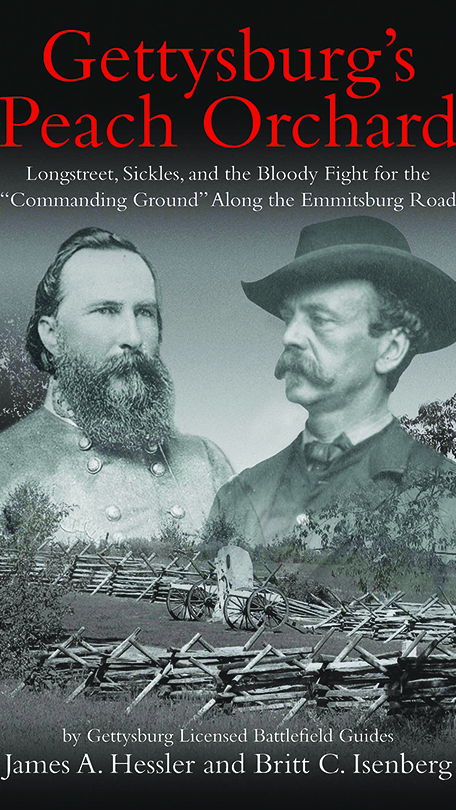
By James A. Hessler and
and Britt C. Isenberg
Savas-Beatie, 2019, $34.95
This finely researched book offers a stunning tactical narrative, and the authors tell stories beyond the usual “who-killed-whom.” They tell the tale of Sherfy, the orchard’s luckless owner; describe Confederate artillery deployment July 3; narrate the battle’s grisly aftermath; and describe contentious postwar efforts by veterans, historians, enthusiasts, and the National Park Service to preserve both Sherfy’s land and the orchard’s memory. This book is an epic battle narrative—a complicated chronicle featuring gripping tales of tactics, humanity, aftermath, and historical memory.
The book, however, underwhelms concerning its primary conclusions. The authors’ belief that the Peach Orchard fighting has been overlooked is not new. Not only did Union veteran John Bigelow’s 1910 57-page book make the same contention, Eric A. Campbell’s 2008 essay, “The Key to the Entire Situation: The Peach Orchard, July 2, 1863,” preceded the authors’ conclusion by a decade.
Although the authors include Campbell’s essay in the bibliography, they did not give it a passing nod. This omission is reflective of a general deficiency in the book: the authors’ inability to master the battle’s voluminous historiography. Frequently, the authors litter their text with such phrases as, “Many historians believe” or “While some may argue,” without indicating which historians have made such assertions. Problematically, the book’s footnotes do not offer any clues delineating the status of the existing literature.
Moreover, the authors’ contention that the Peach Orchard fighting convinced Lee to order Pickett’s Charge is questionable. They believe the ground gained by Confederates on July 2 became “a linchpin of Lee’s July 3 plans.” As proof, they quote Lee’s January 1864 action report, particularly, a section where Lee explained that the Peach Orchard’s acquisition “induced the belief” a renewed assault against the Union line “should ultimately succeed.” The authors claim this was the moment Lee conceived Pickett’s Charge.
This is not so and they cut off Lee’s quote too early. In Lee’s next paragraph, he reveals he intended to use the Peach Orchard starting point to renew his attack on the Union left—the Round Tops—not Cemetery Ridge. Lee scrapped this assault only when Longstreet ignored orders, leaving Ewell’s attack on the Union right unsupported. The Peach Orchard was vital to Lee’s original morning plan, but there is no proof it influenced his decision for the afternoon assault, Pickett’s Charge.
These criticisms should not deter readers looking for a good narrative account of the critical Peach Orchard fighting. –Timothy J. Orr
[hr]
Antebellum Visions of Conflict to Come
Jason Phillips’ Looming Civil War is a dense examination of how Americans thought about the future during the increasingly fractious antebellum years. His book is not a reconsideration of the war’s causes. Instead, it is a challenge to several closely held assumptions about how Northern and Southern political leaders, abolitionists, writers, men and women, blacks and whites, viewed the prospects for war and its likely character and outcomes.
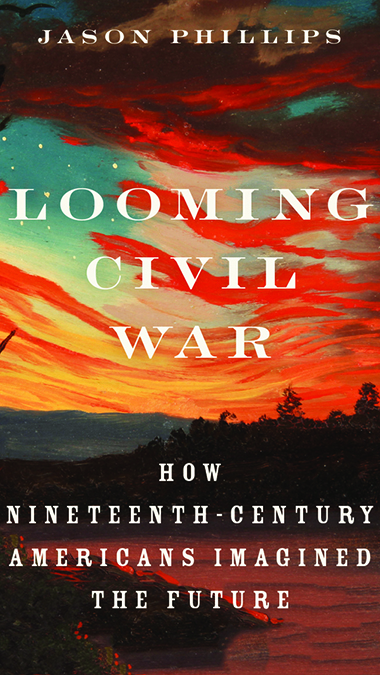
By Jason Phillips
Oxford University Press, 2019, $34.95
Phillips suggests the 19th-century meaning of “looming”—the optical illusion produced when refracted light beams appeared to enlarge and lift objects above the horizon line—is an apt metaphor for an antebellum political atmosphere that magnified the significance of key events and produced differing visions of what the future might hold.
These differences, the author contends, sprang from two different, co-existing temporalities—anticipation and expectation. Americans who believed in progress and free will envisioned a future filled with opportunities; accordingly, they anticipated a time in which their own agency would prove paramount. Those who believed in providence and fate expected a future that would be closed off by impersonal forces.
Phillips takes issue with several widely embraced tropes of Civil War scholarship. He labels it a “false dichotomy” to contrast a modern North characterized by “technology, industry, immigration, and democracy” with a pre-modern South marked by “stagnant agriculture, declining population, arcane aristocracy, and chronic lassitude.” Rather, he insists, “The South was as modern as the North but imagined a different course.” People in both regions “imagined living in the future.”
Phillips is especially critical of “the myth that Americans predicted a short, glorious war….that [would] invigorate the nation.” The reality, he says, was considerably more complex. “Before bloodshed, thousands of people did anticipate a romantic war, but thousands of others expected the worst. The short war myth overshadowed the dread that women felt…ignored the dire warnings of conservatives and border men…[and] erased the hopes of millions of African Americans who prayed for a cataclysm to kill slavery.”
This myth has steadily “romanticized, whitewashed, and masculinized Civil War history” and has provided the foundation for a “seductive narrative…[that] ensures the deep, poetic structure” of the war’s history.” In accepting this narrative, Phillips argues, we have failed “to see how it flattens the horizons and imaginations of Civil War Americans.”
The author concludes by contrasting Northern and Southern temporalities during the postwar years. Northerners looked to the future with anticipation, while Southerners saw a “future of Reconstruction [that] felt imposed by others. White Southerners who mourned a lost cause and black Southerners who struggled for equality against unjust odds expected a future affected by fate and external powers.”
Phillips’ closing observation, while brief, is rich with possibility for informing a continuing examination of the emergence of the Lost Cause as well as the ascendance of Booker T. Washington’s particular brand of black empowerment. His willingness to question key parts of our established Civil War narrative makes this a valuable contribution to our understanding of that cataclysmic national tragedy. –Rick Beard
[hr]
When the War Came to Coastal Carolina
In January 1864, Union enclaves on the coast of North Carolina had posed the threat of an inland invasion for nearly two years, provided bases for raids to liberate slaves and plunder plantations, and denied countless inlets, bays, and sounds to blockade runners bringing critical supplies to the beleaguered Confederacy. Robert E. Lee decided it was time to break the Federal stranglehold and devised a bold campaign to liberate this important region. The story of that campaign is the subject of Hampton Newsome’s meticulously researched and confidently written new monograph.
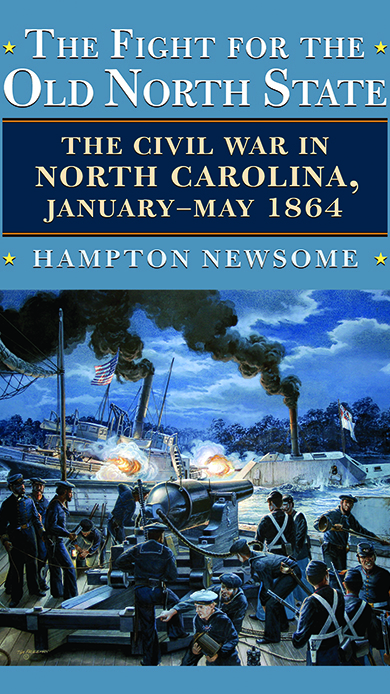
By Hampton Newsome
University Press of Kansas, 2019, $34.95
Newsome adeptly uses three major components of a successful campaign study. He conveys copious operational details without succumbing to a potentially mindnumbing litany of names, places, and numbers describing an equally ponderous recitation of skirmish, battle, and march. He also places the campaign’s military component within a larger political and social context, and he provides astute analytical insights in both his own words and those of contemporaries.
The operations of the Confederate ironclads Albemarle and Neuse also get profuse coverage, as do the controversies surrounding Maj. Gen. George Pickett’s
mass executions of Confederate deserters captured wearing Union uniforms, known as the “Kinston Hangings.” Also getting a look is Matt Ramson’s two-week cavalry raid through four counties and southern Virginia, which achieved “an impressive haul.”
Clearly, Newsome is sure those victories “aided the Confederacy” and “may have helped keep North Carolina in the war,” writing that “confronted with huge manpower odds and material disadvantages, the rebels…executed a remarkable campaign. The results, he ably demonstrates, “reverberated well beyond the confines of the towns and waterways in which they were fought.” –Gordon Berg
Two Views of Lew Wallace’s Peripatetic Career
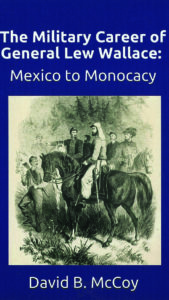
By David B. McCoy
Spare Change Press, 2018, $8.99
The Military Career of General Lew Wallace: Mexico to Monocacy is a focused examination of a remarkably gifted lawyer, politician, and novelist who penned Ben-Hur: A Tale of the Christ, whose principal ambition from an early age was to be a soldier. Wallace’s quest for battlefield glory repeatedly fell short, primarily because he was a “political general,” which in 19th-century America was any officer not in the Regular Army with a U.S. Military Academy ring. Serving in the Mexican War and starting out the Civil War commanding the 11th Indiana Infantry, Wallace showed courage, administrative talents, and political assets useful beyond the battlefield, but the West Pointers did not expect much regarding his lean battlefield knowhow. Circumstances handicapped Wallace, but so, on occasion, did his arrogance, another trait more common among political generals than among West Point “officers and gentlemen” who were educated in tact as well as tactics. A communication failure undid Wallace at Shiloh, but at Monocacy he was finally at the right place at the right time to gain redemption.
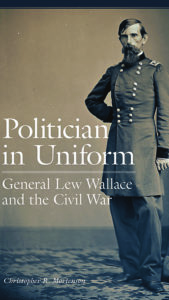
and the Civil War
By Christopher R. Mortenson
University of Oklahoma Press, 2019, $34.95
McCoy’s book is certainly concise, but it suffers from editing inconsistencies, among other things giving precise ranks for some individuals but more often simply referring to them as “general,” a four-star rank that Ulysses S. Grant wouln’t attain until July 1866. Also unfortunate for McCoy is the coincidental appearance of Christopher R. Mortenson’s Politician in Uniform: General Lew Wallace and the Civil War, which essentially tells the same story in greater detail and depth and with more editorial polish. In comparing the two, McCoy’s book comes off as literally the poor man’s version. Given the nature of most Civil War buffs for whom price is seldom an object, Mortenson’s hardback, whose appraisal of Wallace is a little more nuanced and balanced, holds the battlefield—and bookcase—advantage. –Jon Guttman
[hr]
Little-Known But Strategically Important Railroad
The strategic wartime use of railroads in the 1860s is well known, and some railroads played more important roles than others and are easily recognized. One that has gotten short shrift in the past 150 or so years is the Cumberland Valley Railroad, which extended from Harrisburg, Pa., to Hagerstown, Md., via the Franklin Railroad (eventually subsumed by the CVRR).
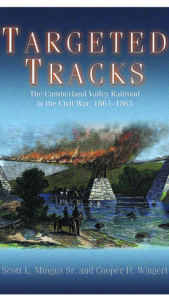
in the Civil War, 1861-1865
By Scott L. Mingus Sr. and Cooper H. Wingert
Savas Beatie, 2019, $32.95
The route and central location of the CVRR gave it its strategic role. Not only did it help supply the Army of the Potomac through the campaigns of 1862-63, it was also a target of invasions and raids through 1864, culminating in the retaliatory burning of Chambersburg, Pa., by forces under Brig. Gen. John McCausland.
Creditably, the authors have included the history of the railroad from its legislative chartering in 1835 to final construction, identifying major personages in its corporate chain of command and describing many antebellum incidents. Interestingly, those incidents involved very few accidents, collisions, derailments, or tragedies—so common with other railroads.
Yet the heart of the book is the aforementioned campaigns and their effect on the overall prosecution of the war effort. The chapters extend from the beginning of the war in 1861 and its escalation in 1862-63 through the Gettysburg Campaign, the Confederate incursion in 1864 and the last year of the war and the railroad’s legacy before disappearing from the corporate scene after being taken over by the old Pennsylvania Railroad.
Among the book’s highlights are maps showing the route of the CVRR through south-central Pennsylvania; other major Eastern Theater railroads; and the route J.E.B. Stuart took on his second ride around the Army of the Potomac in 1862. Welcome, too, are the many previously unseen images from the collections and archives of local historical societies and museums.
This is an interesting addition not just to the history of railroading but also to its effects and influence on the war. Mingus and Wingert are to be commended. –Stuart McClung
[hr]
Black and White Alabamians Fought in Blue
Of the roughly 2 million men to don Union blue during the war, about 400,000 came from Southern and border states. Christopher Rein documents the 7,500 Alabamians, black and white, who served between 1862 and 1866. Though their service wasn’t necessarily decisive, Rein vies that “they magnified the power of the…army by providing critical intelligence of Confederate dispositions…” and, though small in number, they “helped Federal authorities regain control over Confederate-occupied areas and freed up manpower essential [elsewhere].”
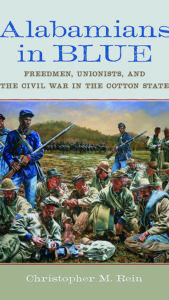
By Christopher M. Rein
LSU Press, 2019, $47.50
Alabama Unionists, who formed the bulk of eight regiments (seven made up of former slaves), risked reprisals from secessionist neighbors, persecution from home guards, and arrest by conscription agents. But the motivation for fighting for the Union wasn’t always ideological. Some opted to serve the Old Flag for more practical, ecological reasons.
Although Rein’s contention that Alabama Unionists came together in opposition to secession and then Reconstruction seems somewhat overstated, his earnest effort to understand the resistance to secession and slavery within the Confederacy adds needed nuance to a still-underappreciated aspect of a complex war. –Gordon Berg
These reviews appeared originally in the November 2019 issue of America’s Civil War.

